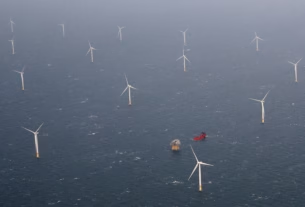In Short : In Kent, England, Otterpool Park, a groundbreaking all-electric garden village, is now under development. The village, which was planned with almost no reliance on fossil fuels, is scheduled to open to inhabitants in 2027. It will have rooftop solar energy systems, totally electric dwellings, and smart energy infrastructure that will allow the town to return power to the national grid.
Blueprint for Technology and Infrastructure

In order to promote sustainable energy living from day one, residents will move into homes furnished with:
Electric heating and cooking systems, EV chargers, rooftop solar panels, and home battery storage.
Up to half of Otterpool’s electricity needs could be met by the 34 MW of solar power that a solar farm next to the town is expected to provide.
One grid-scale battery per 300 residences is part of the communal infrastructure, which allows for demand smoothing, energy buffering, and flexible grid-scale energy storage.
In collaboration with the energy technology company SNRG, a smart microgrid will optimize energy flows, make efficient use of surplus capacity, and allow users to function as a virtual power plant during periods of high demand.
Implications for Clean Energy and Climate Action
Otterpool Park is a practical example of the energy transition, showing how energy efficiency, renewable energy, and net zero emissions can all be combined with sustainable development.
The town mitigates local grid stress, promotes decarbonization, and lessens reliance on fossil fuel-fueled production by producing and storing power locally—all without investing in expensive infrastructure changes.The idea of a green economy is ideally aligned with the planned solar infrastructure and smart grid capabilities, which provide a scalable community model for climate action and sustainable energy uptake.
The Significance of It
Otterpool Park is a shining example of how green energy solutions, such as solar PV, smart batteries, and intelligent grid management, can power large neighborhoods, making it a leader in sustainable urban development. In addition to providing green job possibilities in digital services, energy management, and construction, this initiative promotes climate resilience and the energy transition. More broadly, it serves as a model for upcoming just transition projects that combine creativity with environmental stewardship.




